166. Once upon a time
the
curved tail of the Scorpion had ended the
northern summer (the year in leaf) by force
of its
sting, which had been put at the
opposite side of the pair of straight horns
of the Bull. And below El-nath (The Butting
One, β Tauri) was Orion, with Auriga above
joined to Taurus through El-nath, i.e. there
had been 3 great
constellations at the beginning of summer.
... The ancient Chinese said: One
generates Two, Two generates Three, and
Three generates Everything
...
... Scorpio, or Scorpius, the Scorpion, was
the reputed slayer of the Giant, exalted to
the skies and now rising from the horizon as
Orion, still in fear of the Scorpion, sinks
below it; although the latter itself was in
danger, - Sackville [William] writing in his
Induction to the Mirror of Magistrates, about 1565:
Whiles Scorpio, dreading Sagittarius' dart
// Whose bow prest bent in flight had
slipped // Down slid into the ocean flood
apart.
Classical authors saw in it the monster that
caused the disastrous runaway of the steeds
of Phoebus Apollo when in the inexperienced
hands of Phaëthon ...
"South American savage
tribes held ideas similar to our own about
Taurus, for La Condamine, the celebrated
French scientist of the last century, said
that the Amazon Indians saw in the > of the
Hyades the head of a bull; while Goguet more
definitely stated that, at the time of the
discovery of that river, by Yañez Pinzon in
1500, the natives along its banks called the
group Tapüra Rayoaba, the Jaw of an
Ox; and even in civilized countries it has
been fancifully thought that its shape, with
the horns extending to β and ζ gave title to
the constellation." (Allen)

Metoro's moe te goe could have meant 'to put to sleep in the
recycling waters of the Milky
Way river' (Te Moe = the Milky Way):
 |
 |
 |
|
Cb2-8 (392 + 32) |
Cb2-9 (425 = 365
+ 60) |
Cb2-10 (407 +
19) |
|
Niu |
moe te goe |
 |
 |
|
mago |
Cb2-10 |
Mago.
Spotted dogfish,
small shark.
Vanaga.
Mogo,
shark.
P Pau.:
mago,
id. Mgv. mago,
id. Mq. mano,
mako, mono, moko
id. T. maó,
id. In addition
to this list the
word is found as
mago in
Samoa, Maori,
Niuē, and in
Viti as mego.
It is only in
Rapanui and the
Marquesas that
we encounter the
variant mogo.
Churchill.
 |
 |
326 |
 |
38 |
|
Toki |
Ga2-1 |
Cb2-5 |
|
CANOPUS
(*95) |
ALCYONE
(*56) |
Toki.
Small basalt
axe. Vanaga.
Stone adze. Van
Tilburg.
Ha'amoe ra'a
toki = 'Put
the adze to
sleep' (i.e.
hide it in the
temple during
the night).
Barthel. Month
of the ancient
Rapanui
calendar.
Fedorova
according to
Fischer. To'i.
T. Stone adze (e
to'i purepure
= with the
wounderful
adze). Henry.
The Araukan
Indians in the
coastal area of
northern Chile,
have customs
similar to those
on the Marquesas
and in both
areas toki
means adze
according to
José Imbelloni.
The Araukans
also called
their chief of
war toki
and the
ceremonial adze
symbolized his
function and was
exhibited at the
outbreak of war.
In Polynesia
Toki was the
name of a chief
elevated by the
Gods and his
sign was the
blade of a
toki.
Fraser.
Axe, stone
hatchet, stone
tool ...;
maea toki,
hard slates,
black, red, and
gray, used for
axes T. P Pau.:
toki, to
strike, the edge
of tools, an
iron hatchet.
Mgv.: toki,
an adze. Mq.:
toki, axe,
hatchet. Ta.:
toi, axe.
Churchill.
A Maori saying:
he iti toki,
e rite ana ki te
tangata =
though the adze
be small, yet
does it equal a
man. (Starzecka) |
|
INVISIBLY CLOSE
TO THE SUN NORTH
OF THE EQUATOR: |
|
υ Herculis
(242.3), ρ Cor.
Borealis
(242.4), ι Cor.
Borealis
(242.5), θ
Draconis
(242.6), ξ
Scorpii (242.7)
SCHEDIR (α
Cassiopeiae) |
16h (243.5)
ACRAB = β
Scorpii,
JABHAT AL ACRAB
(Forehead of the
Scorpion) = ω
Scorpii
(243.3), θ Lupi,
RUTILICUS = β
Herculis
(243.5),
MARFIK (Elbow) =
κ Herculis
(243.7), φ
Herculis (243.8) |
ψ Scorpii
(244.6),
LESATH
(Sting)
=
ν
Scorpii
(244.8) |
|
Nov 18 |
19 |
20 (324) |
|
SEPT 15 |
16 (*179) |
17 (260) |
|
238 |
239 |
240 = 260 - 20 |
 |
|
CLOSE TO THE
FULL MOON
ON EASTER
ISLAND: |
|
λ Tauri
(59.3),
ν Tauri
(59.9) |
4h (60.9)
JĪSHUĬ
(Piled-up
Waters)
= λ Persei
(60.7)
COR CAROLI (α
Canum Ven.)
|
υ Persei (61.2) |
|
May 19 (324 -
185) |
20 (140) |
21 (*61 = *45 +
16) |
|
ºMay 15 |
16 (136) |
17 (*57) |
|
'April 22 |
23 (113) |
24 (*34) |
|
"April 8 |
9 (99 + 365 =
464) |
10 (*20) |
|
MARCH 16 (75 =
80 - 5) |
17 (*361 = 464 -
80 - 23) |
18 (77 = *362 +
80 - 365) |
|
55 |
56 |
57 = 77 - 20 =
141 - 84 |
|
Egyptian
cobra in
repose |
 |
Phoenician
nūn |
 |
Greek
nu |
Ν (ν) |
|
...
Nun
is
thought
to have
come
from a
pictogram
of a
snake
(the
Hebrew
word for
snake,
nachash
begins
with a
Nun
and
snake in
Aramaic
is
nun)
or eel.
Some
have
hypothesized
a
hieroglyph
of a
fish in
water
for its
origin
(in
Arabic,
nūn
means
large
fish or
whale).
The
Phoenician
letter
was
named
nūn
'fish',
but the
glyph
has been
suggested
to
descend
from a
hypothetical
Proto-Canaanite
nahš
'snake',
based on
the name
in
Ethiopic,
ultimately
from a
hieroglyph
representing
a snake.
...
Nahš
in
modern
Arabic
literally
means
'bad
luck'.
The
cognate
letter
in Ge'ez
and
descended
Semitic
languages
of
Ethiopia
is
nehas,
which
also
means
'brass'. |
 |
|
17 |
 |
 |
 |
|
Cb3-3 |
Cb3-4 (445 =
392 + 53) |
Cb3-5 (54) |
|
ko te
henua - te
rima |
e kava |
i haga
rave ika |
|
INVISIBLY
CLOSE TO THE
SUN NORTH OF
THE EQUATOR: |
|
ξ Ophiuchi
(262.2), θ
Ophiuchi, ν
Serpentis,
ζ, ι Apodis
(262.4), ι
Arae
(262.8), ρ
Herculis
(262.9) |
β, γ Arae
(263.3),
Κ Arae
(263.5), σ
Ophiuchi
(263.6) |
LESATH
(The Sting)
=
υ
Scorpii,
δ Arae
(264.7),
CHOO = α
Arae
(264.9) |
|
Dec 8
(342 = 6 *
57) |
9 (7 * 7 *
7) |
10 (*264 =
*81 + 183) |
|
OCT 5
(278) |
6 |
7 (*200) |
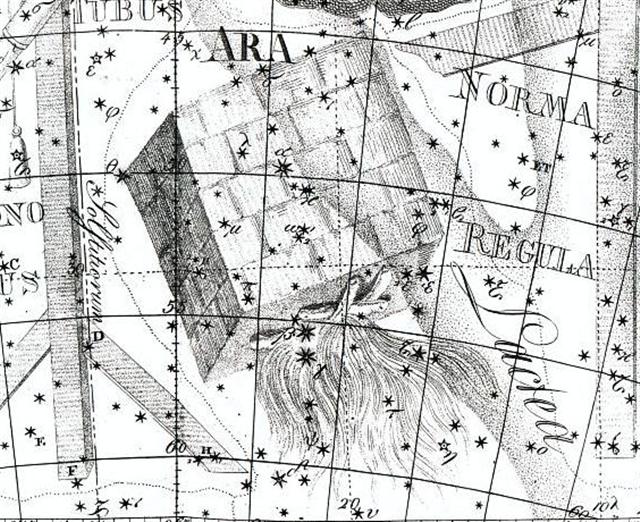 |
|
CLOSE TO THE
FULL MOON
ON EASTER
ISLAND: |
|
λ Aurigae
(79.0), λ
Leporis
(79.6), ρ
Aurigae
(79.7)
ARCTURUS (α
Bootis) |
σ Aurigae
(80.4),
BELLATRIX =
γ Orionis,
SAIF AL
JABBAR = η
Orionis
(80.7),
ELNATH
(The Butting
One) = β
Tauri
(80.9) |
ψ Orionis
(81.1),
NIHAL
(Thirst-slaking
Camels) = β
Leporis
(81.7) |
|
June 8 |
9 (*80) |
10 (161) |
|
APRIL 5 (95) |
6 |
7 (*16 + *1) |
|
...
Midsummer is
the
flowering
season of
the oak,
which is the
tree of
endurance
and triumph,
and like the
ash is said
to 'court
the
lightning
flash'. Its
roots are
believed to
extend as
deep
underground
as its
branches
rise in the
air - Virgil
mentions
this - which
makes it
emblematic
of a god
whose law
runs both in
Heaven and
in the
Underworld
... The
month, which
takes its
name from
Juppiter the
oak-god,
begins on
June 10th
and ends of
July 7th.
Midway comes
St. John's
Day, June
24th, the
day on which
the oak-king
was
sacrificially
burned
alive. The
Celtic year
was divided
into two
halves with
the second
half
beginning in
July,
apparently
after a
seven-day
wake, or
funeral
feast, in
the
oak-king's
honour ...
 |
When the Stranger
King had arrived from far away he was
bound to follow the
anciently
established
ceremonial patterns.
His canoe (va-ka
- as in awake)
should be drawn up
on land and turned
around (ka-va
- as in cave)
to form a kind of 'house' (hare
paega).
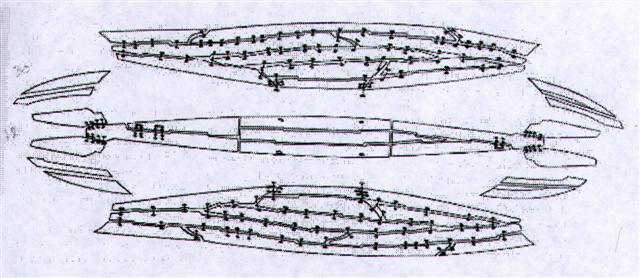
 |
 |
89 |
 |
|
kava |
Cb3-4 (445) |
Cb6-27 (535) |
|
κ Arae
(*263.5) |
Kerb
(*353.6) |
|
El Nath
(*80.9) |
Alula
(*170.5) |
|
Egyptian
hand |
 |
Phoenician
kaph |
 |
Greek
kappa |
Κ (κ) |
|
Kaph
is thought
to have been
derived from
a pictogram
of a hand
(in both
modern
Arabic and
modern
Hebrew,
kaph
means
palm/grip)
...
... The
manik,
with the
tzab, or
serpent's
rattles as
prefix, runs
across
Madrid tz.
22 , the
figures in
the pictures
all holding
the rattle;
it runs
across the
hunting
scenes of
Madrid tz.
61, 62, and
finally
appears in
all four
clauses of
tz. 175, the
so-called
'baptism'
tzolkin. It
seems
impossible,
with all
this, to
avoid
assigning
the value of
grasping or
receiving.
But in the
final
confirmation,
we have the
direct
evidence of
the signs
for East and
West. For
the East we
have the
glyph
Ahau-Kin,
the Lord
Sun, the
Lord of Day;
for the West
we have
Manik-Kin,
exactly
corresponding
to the term
Chikin,
the biting
or eating of
the Sun,
seizing it
in the mouth.



The pictures
(from Gates)
show east,
north, west,
and south;
respectively
(the lower
two glyphs)
'Lord' (Ahau)
and 'grasp'
(Manik).
Manik
was the 7th
day sign of
the 20 and
Ahau
the last
... |
|
Churchill
has
pointed
out that
kavakava
(rib) is
related
to
vakavaka:
P Mgv.:
vakavaka,
the
breast.
Mq.:
vakavaka,
vaávaá,
rib.
Ma.:
wakawaka,
parallel
ridges.
We shall
need all
the
available
material
in order
to
determine
the germ
sense of
this
word.
Sa.:
va'ava'a,
the
breast-bone
of a
bird;
fa'ava'a,
the
frame as
of a
slate.
To.:
vakavaka,
the
side.
Fu.:
vakavaka,
the side
below
the
armpit.
Ha.:
hoowaa,
to make
furrows.
In all
these we
may see
the idea
of ridge
or
depression,
or of
both, as
primal
(Rapanui,
Samoa,
Marquesas,
Maori,
Hawaii),
and as
secondary
the part
of the
body
where
such
appearance
is
common
(Mangareva,
Tonga,
Futuna). |

... The first god's
house in the temple
was the body of
Ta'aroa's own
person, and it
became a model for
all other god's
houses. One day
Ta'aroa let
himself go into a
trance and his
spirit stood away in
space while his body
floated in the sea,
then he said to his
daughters: 'Oh,
girls! How many
canoes are there at
sea?' And the
daughters replied:
'It is like one, it
is like one!' Then
Ta'aroa's
spirit said: 'Who
can it be?' And they
answered: 'It is
thyself assuredly!'
...
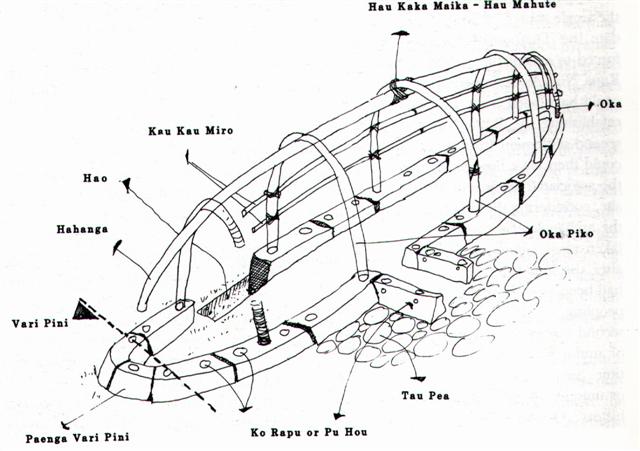
... to enter a war
canoe from either
the stern or the
prow was equivalent
to a 'change of
state' or 'death'.
Instead, the warrior
had to cross the
threshold of the
side-strakes as a
ritual entry into
the body of his
ancestor as
represented by the
canoe
...
...
Indeed, at the
rituals of the
installation, the
chief is invested
with the 'rule' or
'authority' (lewaa)
over the land, but
the land itself is
not conveyed to him.
The soil (qele)
is specifically
identified with the
indigenous 'owners'
(i taukei), a
bond that cannot be
abrogated. Hence the
widespread assertion
that traditionally
(or before the Lands
Commission) the
chiefly clan was
landless, except for
what it had received
in provisional title
from the native
owners, i.e., as
marriage portion
from the original
people or by bequest
as their sister's
son ... The ruling
chief has no corner
on the means of
production.
Accordingly, he
cannot compel his
native subjects to
servile tasks, such
as providing or
cooking his daily
food, which are
obligations rather
of his own
household, his own
line, or of
conquered people (nona
tamata ga, qali
kaisi sara).
Yet even more
dramatic conditions
are imposed on the
sovereignity at the
time of the ruler's
accession. Hocart
observes that the
Fijian chief is
ritually reborn on
this occasion; that
is, as a domestic
god. If so, someone
must have killed him
as a dangerous
outsider. He is
indeed killed by the
indigenous people at
the very moment of
his consecration, by
the offering of
kava that
conveys the land to
his authority (lewaa).
Grown from the
leprous body of a
sacrificed child of
the native people,
the kava the
chief drinks poisons
him ...
|
... On
Easter
Island
they had
not
the
kava
root.
Instead
they
used the
word
kava
for
ginger (gingembre,
according
to
Bishop
Jaussen's
word-list,
ref.:
Barthel).
And
ginger
roots
are
yellow,
twisted
and
knobby:

Picture
from
Internet
(Wikipedia).
It is
said
that the
root of
Zingiber
-
from
Tamil
Iñci
Officinale
-
traditionally
was
eaten by
pregnant
Chinese
women to
'combat
morning
sickness'.
In India
they
apply it
to the
temples
(i.e. to
the
sides of
the
head) as
a paste
to
relieve
headache
... |
.jpg)
... It is
certainly true
that the
exterior form of
the hare
paenga, when
the
superstructure
and thatch are
intact,
resembles an
overturned boat,
with the form
established by
the foundation.
However, it is
equally true
(and perhaps
equally
important) that
the
configuration of
the foundation
is otherwise
most like the
Rapa Nui
vulva design
called komari.
The komari
is the
quintessential
female symbol
which is
everywhere
prominent in
Rapa Nui
art, often
carved in rock
and wood,
incised on human
crania, and
painted on the
human body. In
the hare
paenga
foundation form,
the komari
is cut in stone
and embedded in
the earth, the
cosmologically
female realm.
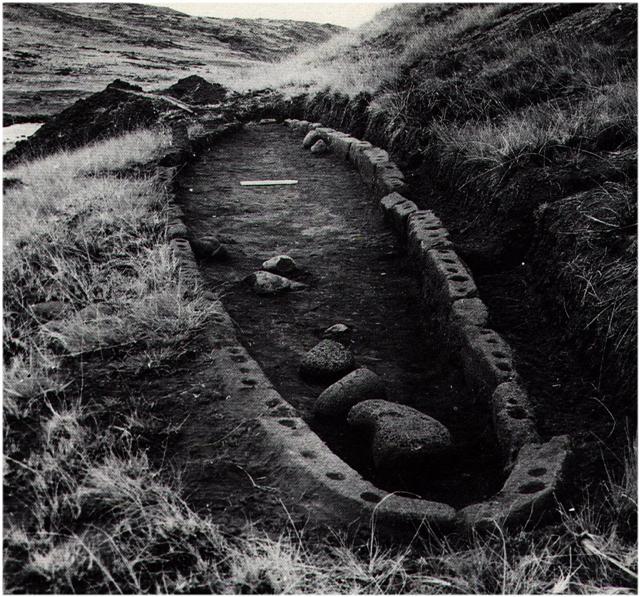
Spanning
above, over
and
virtually
into this
komari
foundation
is the
ridgepole
'backbone'
and curved
rafter
'ribs' of
what I
surmise to
be a
symbolically
male form.
In short, we
have a
shelter
which may be
metaphorically
understood
as 'the sky
father
enclosing
his progeny
as he
embraces the
earth'.
Those
progeny
entered and
departed
this
male/female,
earth/sky
form through
a low, dark
tunnel which
may be
logically
compared to
the birth
canal .
This postulated
symbolism does
not, of course,
negate the
'overturned
boat'
comparison,
since Polynesian
canoes were
often likened to
the bodies of
great ancestors
or to Tane
as First Man.
The canoe which
transported the
first
exploratory
voyage to
Rapa Nui was
said to have
been called The
Living Wood, a
reference to
Tane.
Indeed, it is
likely that the
'overturned
boat' concept
and its
relationship to
home, hearth and
lineage, which
is so
graphically
visible, was
commonly
understood
(hence its
retention in the
oral
literature),
while the more
esoteric godly
connections,
perhaps along
the lines of
those explored
here, were known
only by
spiritual
leaders
...
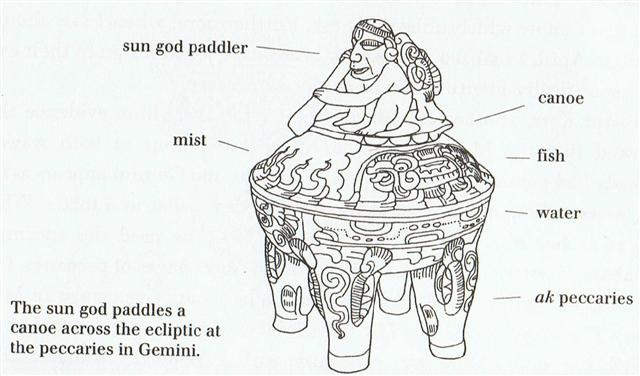
In the G text glyph
Gb2-34 - whioch is number 290
counted from zero at
the beginning of
side a - corresponded
to the place where
the Sun was drawn up
again from the sweet
waters far down,
i.e. half a year
after the Lion King
had been submerged:
 |
 |
 |
 |
|
Gb2-32 |
Gb2-33 |
Gb2-34
(60) |
Gb2-35
(290) |
|
INVISIBLY
CLOSE TO THE
SUN NORTH OF
THE EQUATOR: |
|
SIMMAH =
γ
Piscium
(351.7) |
φ
Aquarii
(352.0),
ψ
Aquarii
(352.4),
χ
Aquarii
(352.6),
γ
Tucanae,
φ Gruis
(352.8) |
CROSS-BARS |
|
ο Cephei
(353.3),
KERB
(Bucket
Rope) =
τ Pegasi
(353.6) |
κ
Piscium
(354.2),
θ
Piscium
(354.4),
υ Pegasi
(354.9) |
|
March 7 |
8 (432 =
4 * 108) |
9 (68) |
10
(*354) |
|
°March 3 |
4 |
5 (64) |
6 (*350) |
|
'Febr 8
(*324) |
9 |
10 (41) |
11 (407) |
|
"Jan 25
(*310) |
26 |
27 (392) |
28 |
|
JAN 2 |
3 (368 =
4 * 92) |
4 |
5 |

... With
α
Andromedae
[Sirrah
→ Navel]
and
γ
Pegasi
[Kerb],
as the
Three
Guides,
it [Caph
→
Phoenician
Kaph,
Hand]
marks
the
equinoctial
colure,
itself
exceedingly
close to
that
great
circle;
and,
being
located
on the
same
side of
the pole
as is
Polaris,
it
always
affords
an
approximate
indication
of the
latter's
position
with
respect
to that
point.
This
same
location,
32º from
the
pole,
and very
near to
the
prime
meridian,
has
rendered
it
useful
for
marking
sidereal
time.
When
above
Polaris
and
nearest
the
zenith
the
astronomical
day
begins
at 0
hours, 0
minutes,
and 0
seconds;
when due
west the
sidereal
time is
6 hours;
when
south
and
nearest
the
horizon,
12
hours,
and when
east, 18
hours;
this
celestial
clockhand
then
moving
on the
heavenly
dial
contrary
to the
motion
of the
hands of
our
terrestrial
clocks,
and at
but one
half the
speed
...
...
τ,
4.5,
with
υ,
was Al
Sufi's
Sa'd al
Na'amah,
which
Knobel
thinks
should
be Al
Na'āim,
the
Cross-bars
over a
well;
but they
also
were
known as
Al
Karab,
the
Bucket-rope.
The
usual
titles
for
τ
-
Markab
and
Sagma
or
Salma
- are
from
Bayer,
but the
last two
should
be
Salm,
a
Leathern
Bucket
... |
|
CLOSE TO THE
FULL MOON
ON EASTER
ISLAND: |
|
AL
SHARAS
(The
Rib) = β
Crateris
(168.6) |
Al
Zubrah-9
(Lion's
Mane) /
Purva
Phalguni-11
ZOSMA
(Girdle)
= δ
Leonis
(169.2),
COXA
(Hips) =
θ Leonis
(169.4) |
φ Leonis
(170.0),
ALULA
(First
Spring
of the
Gazelle)
= ξ, ν
Ursae
Majoris
(170.5),
LABRUM =
δ
Crateris
(170.6) |
σ Leonis
(171.1),
λ
Crateris
(171.6),
ι
Leonis,
ε
Crateris
(171.9) |
|
Sept 5
(248) |
6 |
7 |
8 (*171) |
|
°Sept 1
(244) |
2 |
3 |
4
(*168) |
|
'Aug 9
(221) |
10 |
11 |
12
(*144) |
|
"July 26
(207) |
27 |
28 |
29
(*130) |
|
JULY 3
(184) |
4 |
5 |
6 (*107) |
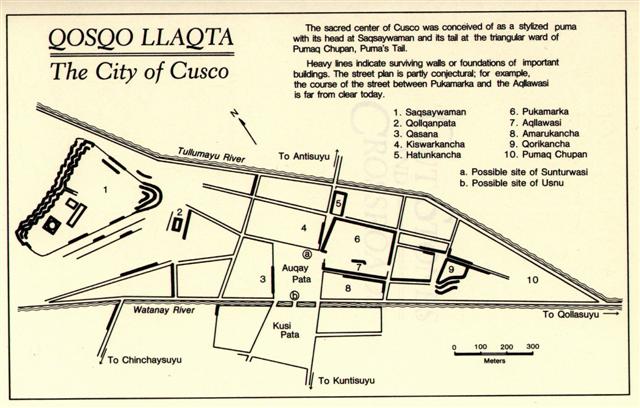
... God
created
Eve from
one of
Adam's
ribs and
therefore
I have
dared to
translate
the
'female'
(β)
star
Al
Sharas
with
The Rib.
Although
according
to Allen
this
star was
plural:
...
β
... was
one of
Al
Tizini's
Al
Sharāsīf,
the
Ribs, -
i.e. of
the
Hydra, -
and the
first of
the set
...
...
Atea
then
became
the wife
of
Rua-tupua-nui,
Source
of Great
Growth,
and they
became
the
parents
of all
the
celestial
beings,
first
the
shooting
stars,
then the
Moon and
the Sun,
next the
comets,
then the
multitude
of stars
and
constellations,
and
finally
the
bright
and dark
nebulae.
When
this
tremendous
task had
been
accomplished
Atea
took a
third
husband,
Fa'a-hotu,
Make
Fruitful.
Then
occurred
a
curious
event.
Whether
Atea
had
wearied
of
bringing
forth
offspring
we are
not
told,
but
certain
it is
that
Atea
and her
husband
Fa'a-hotu
exchanged
sexes.
Then the
eyes of
Atea
glanced
down at
those of
his wife
Hotu
and they
begat
Ru.
It was
this
Ru
who
explored
the
whole
earth
and
divided
it into
north,
south,
east,
and west
...

|
|
CLOSE TO THE
FULL MOON
ON EASTER
ISLAND: |
 |
 |
 |
 |
|
Ga4-21
(104 = 4
* 26) |
Ga4-22 |
Ga4-23 |
Ga4-24
(290 -
183) |
|
... After the food
supplies had been
brought on land, the
two rulers, the king
and the queen said,
'Drag the canoes on
land and take them
apart (so the wood
can be used) to
build houses and
cover the roofs!'
They dragged the two
canoes on land and
took them apart.
After they had
finished
disassembling the
canoes, Nuku
covered all the
houses ...
[E:84
→
Julian
equinox] |

|
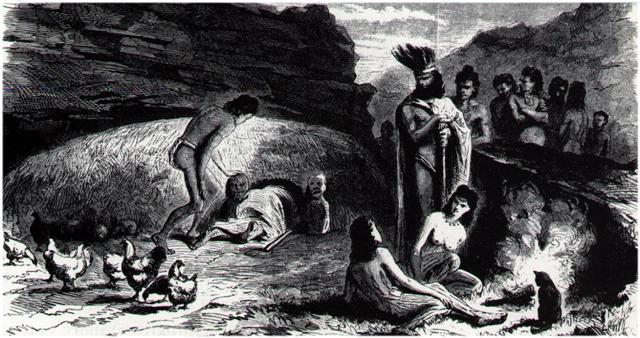




















.jpg)









